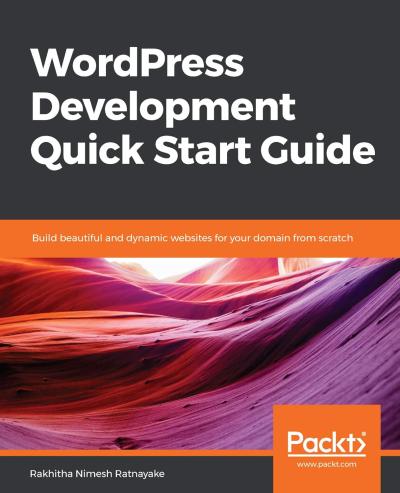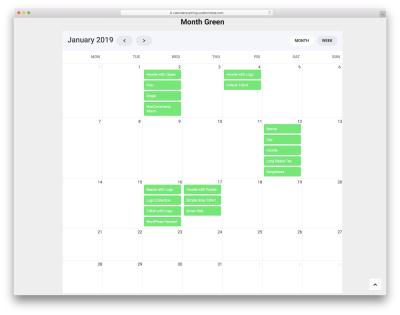Page Load Time Estimator
📊 Load Time Analysis for
📈 Performance Comparison
💡 Performance Insights
Related Design & Testing Tools
Test and fine-tune your designs with these sweet tools for spacing, colors, and performance. Your site’s about to be the talk of the town!
Button Spacing Comparator
Fine-tune button spacing like you’re tuning a guitar for a perfect chord.
Pixel Gap Tester
Measure pixel gaps to keep your layouts as tight as a new skateboard.
Mobile View Cropper
Crop and test designs so your site looks dope on phones, no squinting required.
Dark Mode Checker
Test your site’s dark mode to keep it chill like a moonlit night.
Line Height Tester
Tweak line heights to make your text flow like a lazy river.
Color Vibe Detector
Pick colors that vibe like a perfect playlist for your site.
Image File Type Identifier
Sort out image file types to keep your site running smoother than butter.
Preloader Timer Simulator
Test preloaders to keep users hooked like a cliffhanger movie.
Text-to-ALT Description Generator
Create ALT text for images to make your site friendly as a neighbor’s BBQ.
Fluffy Word Counter
Cut the fluff from your content to keep it sharp like a chef’s knife.
Font Awesome to Unicode Converter
Swap Font Awesome icons to Unicode quicker than a snap of your fingers.
Ever wondered how long your website takes to load? You're not alone. Website speed is something that keeps many web developers and business owners up at night. The Page Load Time Estimator at ThemesPanda.com is here to help you get a quick estimate of your page loading times without all the technical headaches.
This simple yet powerful tool does exactly what its name suggests. You input your page size in megabytes or kilobytes, and it tells you how long visitors will wait to see your content. No complicated setup, no technical jargon, just straightforward numbers that make sense.
What Makes This Tool Special?
The beauty of this estimator lies in its simplicity. You don't need to be a web developer to use it. Just grab your page size and plug it in. The tool instantly calculates loading times for three different connection speeds: 3G, 4G, and broadband. Why these three? Because they represent the most common internet speeds your visitors are using right now.
3G connections are still surprisingly common, especially in rural areas or developing countries. If your website takes forever to load on 3G, you're potentially losing a significant chunk of your audience.
4G speeds represent the sweet spot for most mobile users today. This is where the majority of your mobile traffic is coming from.
Broadband connections show you how your site performs for desktop users and those lucky enough to have high-speed internet at home.
How Do You Use It?
Using the Page Load Time Estimator couldn't be easier. Here's what you do:
- Find your page size - You can check this in your browser's developer tools, or use online tools to measure it
- Enter the size - Type in something like "2.4MB" or "850KB"
- Get your results - The tool instantly shows you loading times for all three connection types
That's it. No sign-ups, no email addresses, no hidden fees. Just pure functionality.
Why Should You Care About Page Load Times?
Here's the thing about website speed that many people don't realize: it directly impacts your bottom line. Studies show that 57% of users will abandon a website if it takes more than 3 seconds to load. That's not just a statistic, that's real money walking out the door.
Google has also made page speed a ranking factor. Slower websites get pushed down in search results. Amazon found that every 100ms delay in page load time decreased sales by 1%. When you're talking about millions of visitors, that 1% adds up quickly.
But it's not just about money. It's about user experience. Think about your own browsing habits. How long do you wait for a page to load before you give up and try somewhere else? Probably not very long.
What Connection Speeds Actually Mean
Let's break down what these connection speeds mean in real terms:
3G Networks:
- Download speeds: 0.5-2 Mbps
- Common in rural areas
- Still used by millions of people worldwide
- Your page needs to be optimized for these speeds
4G Networks:
- Download speeds: 5-50 Mbps
- Standard for most mobile users
- What most people expect nowadays
- Good benchmark for mobile optimization
Broadband Connections:
- Download speeds: 25+ Mbps
- Desktop and high-speed home internet
- Fastest loading times
- Shows your site's potential performance
Real-World Examples
Let's say you have a typical business website that's about 2.5MB in size. Using the Page Load Time Estimator, you might see results like this:
- 3G: 15-20 seconds
- 4G: 3-5 seconds
- Broadband: 1-2 seconds
Those 3G numbers should make you nervous. Twenty seconds is an eternity in internet time. Most users will have clicked away before your page even finishes loading.
Now consider an optimized website that's only 800KB:
- 3G: 5-7 seconds
- 4G: 1-2 seconds
- Broadband: Under 1 second
Much better, right?
The Psychology of Loading Times
Why do loading times matter so much psychologically? It comes down to expectations and instant gratification. We live in an age where everything happens instantly. Social media updates in real-time, messages are delivered in seconds, and we expect websites to work the same way.
When a page takes too long to load, users don't just get frustrated with the slow connection. They get frustrated with your brand. They start questioning whether your business is professional, whether your products are worth their time, whether they should trust you with their information or money.
First impressions matter, and page load time is often the very first impression your website makes.
Common Page Size Culprits
What makes pages so heavy anyway? Here are the usual suspects:
Images are the biggest culprit. High-resolution photos, especially unoptimized ones, can easily push your page size into the multi-megabyte range. A single uncompressed photo can be 5MB or more.
Videos are even worse. Auto-playing videos or background videos can make your page enormous. Even small video files are typically much larger than other content types.
JavaScript files add up quickly. Modern websites often load dozens of different JavaScript libraries, each adding to the total page weight.
CSS files and web fonts contribute their share too. Multiple font families and extensive styling can significantly impact loading times.
How to Interpret Your Results
Once you get your results from the Page Load Time Estimator, how do you know if they're good or bad? Here are some general guidelines:
Excellent: Under 2 seconds on 4G
- Your users will be happy
- Google will love you
- Conversions should be strong
Good: 2-4 seconds on 4G
- Acceptable for most users
- Room for improvement
- Monitor bounce rates
Needs Work: 4-8 seconds on 4G
- Users getting impatient
- Losing potential customers
- Time to optimize
Critical: Over 8 seconds on 4G
- Major user experience problem
- Significant revenue impact
- Immediate action required
Beyond the Numbers
While the Page Load Time Estimator gives you valuable insights, remember that real-world performance can vary. Network conditions change, server response times fluctuate, and user devices have different processing capabilities.
The tool provides estimates based on ideal conditions. In reality, your actual loading times might be higher due to:
- Server response delays
- Network congestion
- Device processing limitations
- Browser caching issues
- Geographic distance from servers
Making Improvements
Found out your page is loading slowly? Don't panic. There are plenty of ways to speed things up:
Optimize images by compressing them and using modern formats like WebP. This alone can cut your page size in half.
Minimize HTTP requests by combining CSS and JavaScript files where possible.
Use caching to help returning visitors load your pages faster.
Choose a good hosting provider with fast servers and content delivery networks.
Remove unnecessary plugins and scripts that aren't essential to your page's functionality.
The Mobile Reality
Here's something that might surprise you: over 60% of web traffic now comes from mobile devices. That means most of your visitors are using 3G or 4G connections, not broadband.
This makes the Page Load Time Estimator even more valuable. You need to know how your site performs on mobile connections because that's where most of your traffic is coming from.
Mobile users are also more impatient than desktop users. They're often multitasking, on the go, or using their phone quickly between other activities. A slow-loading page on mobile is almost guaranteed to lose visitors.
Testing Strategy
Don't just test your homepage. Use the Page Load Time Estimator on your most important pages:
- Homepage
- Product pages
- Contact page
- About page
- Blog posts
- Landing pages
Each page might have different sizes and loading characteristics. Your homepage might be optimized, but what about that product page with fifteen high-resolution images?
The Business Impact
Let's talk numbers. If you have 1000 visitors per day and your current page takes 8 seconds to load on 4G, you might be losing 300-400 visitors daily just due to slow loading times.
Over a month, that's 9,000-12,000 lost visitors. If just 2% of those visitors would have made a purchase, and your average order value is $50, you're looking at $9,000-$12,000 in lost revenue monthly.
That's real money that could be saved with some basic optimization.
Future-Proofing Your Website
Internet speeds are constantly improving, but user expectations are improving even faster. What seems fast today might feel slow tomorrow. The Page Load Time Estimator helps you stay ahead of the curve by showing you where your site stands right now.
5G networks are rolling out worldwide, promising even faster speeds. But here's the thing: even with faster networks, optimized websites will always perform better than bloated ones.
Final Thoughts
The Page Load Time Estimator at ThemesPanda.com is more than just a calculator. It's a reality check for your website's performance. It shows you, in concrete terms, what your visitors are experiencing when they try to access your content.
Use it regularly. Test your pages. Share the results with your team. Make optimization a priority, not an afterthought.
Remember, in the digital world, speed isn't just about convenience. It's about respect for your users' time, money, and attention. The Page Load Time Estimator helps ensure you're showing that respect.
Your website visitors will thank you, your search engine rankings will improve, and your bottom line will reflect the positive changes. Sometimes the most powerful tools are the simplest ones, and this estimator proves that point perfectly.
Latest Insights and Resources

The Ultimate Guide to Building Your WordPress Site from Scratch
Starting a website might seem overwhelming at first, but with WordPress, it’s more accessible than you think. Whether you’re creating […]

Exploring Behestmtl.wordpress.com: A Look at WordPress & Twitter Integration
Welcome to our deep dive into behestmtl.wordpress.com, a vibrant platform that combines the power of WordPress with seamless Twitter integration. […]

How to Embed a Calendar into WordPress for Better Scheduling
Are you looking to make your website more organized and user-friendly? Embedding a calendar into your WordPress site is a […]
